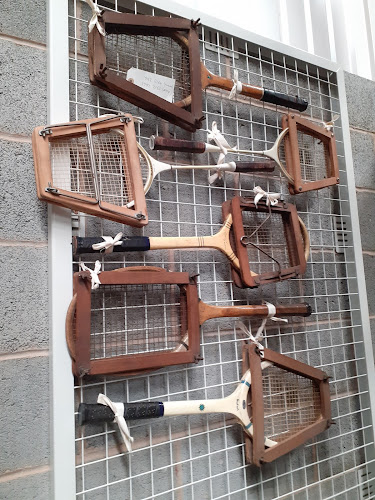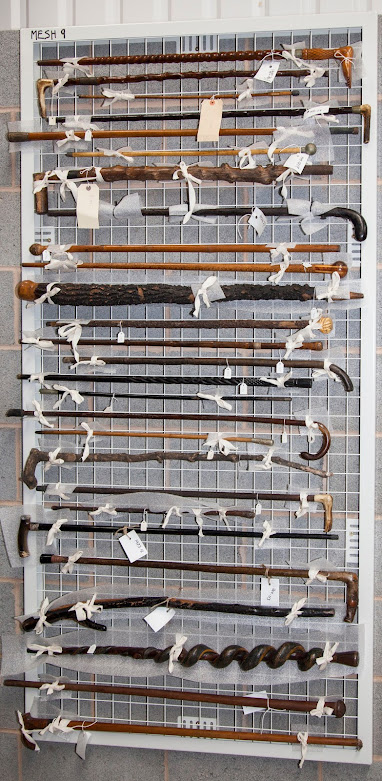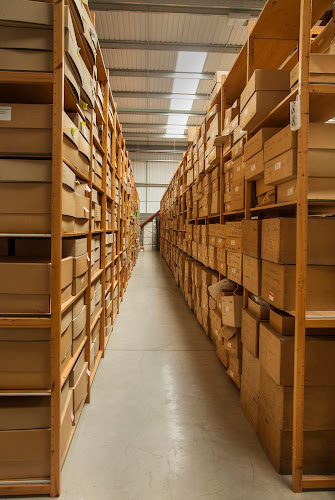The Wakefield Museums & Castles collection contains more than 111,000 objects that tell the story of our district from the distant past to the present day. Today, we can only display a small proportion of the collection at any one time. But even if they're not on show, all the objects are kept safe for future use. To celebrate Heritage Open Days 2020, we thought we'd give you a sneak peek behind the scenes at the museum store, sharing some highlights of the collection and how we care for them.
A century of collecting
Our collection has been in development for over a century and continues to grow today. The first museum in Pontefract was established by volunteers at Pontefract Castle in the 19th century. In Wakefield, Holmfield House in Clarence Park opened its doors as the city's first museum and art gallery in 1923. And by the 1930s, objects were also being collected in Castleford, originally by the local library.
 |
| Pontefract's first museum opened at the castle on 29th April 1892 with 256 objects. |
 |
Visitors enjoying an exhibition at Holmfield House, 1930s
|
In 2020, our social history and archaeology collections are a treasure trove of fascinating stories that form the basis of our main museum galleries, our special exhibitions, and many displays in our communities across the district. We regularly update our displays to showcase as many different objects as possible. Those that are not currently on display are looked after at the museum store.
From the very small...
 |
This tiny pig shaped Stanhope viewer contains six early 20th century images of Castleford and measures just 16 x 21 x 10mm!
|
Demonstration of viewing the images in the pig Stanhope viewer
... to the very large!
 |
Dennis Big Four fire engine
|
 |
The engine was used by the City of Wakefield fire bridge, 1935-1954, before being acquired by the museum in 1968.
|
And the very old...
 |
Ancient Egyptian clay mould for jewellery manufacture, c. 1200-1400 BC
|
... to the very new.
 |
Child's Peppa Pig bowl and cup set, 2018
|
All shapes and sizes
In the collections store, we organise objects according to a variety of criteria, including size, shape, material or theme. This makes the best use of our space, allows us to meet the varied conservation needs of different kinds of objects, and helps us to find things more easily. Our objects are packed using inert materials that won't cause their condition to deteriorate and will help protect them from dust and dirt, changes to the environment, or damage by movement and vibration.
Here's a whistle stop tour!
 |
These archive boxes contain our photographic and ephemera (paper based) collections, organised by theme.
|
 |
| Ephemera is kept flat in conservation grade polyester sleeves and supported by acid free cardboard. |
 |
A selection of typewriters in one of our small social history aisles
|
 |
Most small social history objects are wrapped in acid free tissue and boxed.
|
 |
| These drawers contain some of our large plastics collection. Plastic requires specialised care and, unlike other objects, these need air circulation and so are not stored in sealed boxes. We store plastics according to their type (e.g. PVC) and they are supported on inert Plastazote. |
 |
Storing suitable objects on wall mounted wire mesh allows us to save shelf space for bulkier items.
|
 |
More than you can shake a walking stick at
|
 |
The right tool for the job
|
 |
| Our large social history racking includes our furniture collection. |
 |
Our archaeology aisles contain many thousands of finds from local excavations.
|
 |
Larger archaeology such as stonework is kept on wooden pallets on stronger shelving, which can support heavy objects.
|
 |
Like these cannon balls!
|
Hive of activity
As well as our weird and wonderful objects, there's often a few members of the collections team to be found at the store - our natural habitat! This is where we add new objects to the collection and prepare for exhibitions, amongst many other tasks.
Every object is given a unique identification number on our collections database. After a new acquisition has been accepted into the collection, we create a record that tells us what it is and what it looks like, how and when we acquired it, and what's special or interesting about it. During the object's lifetime in the collection, its record is updated to document when it is exhibited or used, any change in its condition or any conservation work, or if we find out any new information about it.
Once we have catalogued the object, it will be marked with its unique number. We use materials that won't damage the object and write the label somewhere where we can find it but that won't be visible on display. All labelling is semi-permanent - we don't want the number to come off so that we can't match it to its record but we also don't want to permanently change the object's appearance.
 |
Cataloguing kit
|
After labelling, the object goes for photography. Good images help us to identify objects in future and keep a track of their condition. It also means that we can share our collections online - whether in our
searchable databases, on our social media, or here on this blog!
 |
A new acquisition ready for its close up!
|
Finally, the object is carefully packed and put away, making sure to record the location on its catalogue record so that we can find it in future, for example if we want to include it in an exhibition.
When we're choosing objects for exhibitions, we need to check their condition to make sure that it won't cause them any damage. Sometimes, we need to send items for conservation before we can display them.
We often use the space at store to practise our exhibition layouts and test what will fit in our cases and which arrangements look best.
We hope you've enjoyed this special Heritage Open Days glimpse into our store. For more behind the scenes content and collections stories, stay tuned to the blog and our social media.
And if this has whet your appetite, you'll find some of our collections available to browse online.

























No comments:
Post a Comment
We would love your comments - though they may take a day or two to appear.